Angela Sharkey’s eclectic style of art is constantly evolving as she brings her visions to life with an emphasis on color, design and texture. Having a background in graphic design, she is always aware of balancing shape, color, and line in her artwork. Working in a variety of mediums, she uses layers of various textures in her paintings along with her hand-designed stencils and her own richly colored papers. She invites the viewer to explore the rich and varied landscapes she creates, telling a story through her work. Architectural elements, iron works, patterns and ornamentation are throughout her work as she freely manipulates and applies these designs, letting them influence her art. Angela’s marriage of color and pattern weave a tapestry on the canvas as her visions take shape. Frequently moving around the world, Angela is continually inspired by her new surroundings and how they affect her perspective on life; Angela imbues this reflection in her work.
In her own words
My love for art and expressing myself artistically is an integral part of who I am and I have been creating art for over 20 years. My art career started as a graphic designer after I studied at the Milwaukee Institute of Art and Design and has evolved into painting. My current répertoire consists of acrylic, mixed-media, watercolor, and pastel on a variety of surfaces. Deep edge canvases are my choice for painting; I love the fact that when I’m done I can paint the sides and have a painting ready to hang without framing. Sketching my ideas, creating my own stencils, and hand coloring papers are all part of the process for me when I start a painting. The meditative act of stencil making and hand painting papers as well as sketching some ideas gives me a perspective and direction as to where my painting might go.
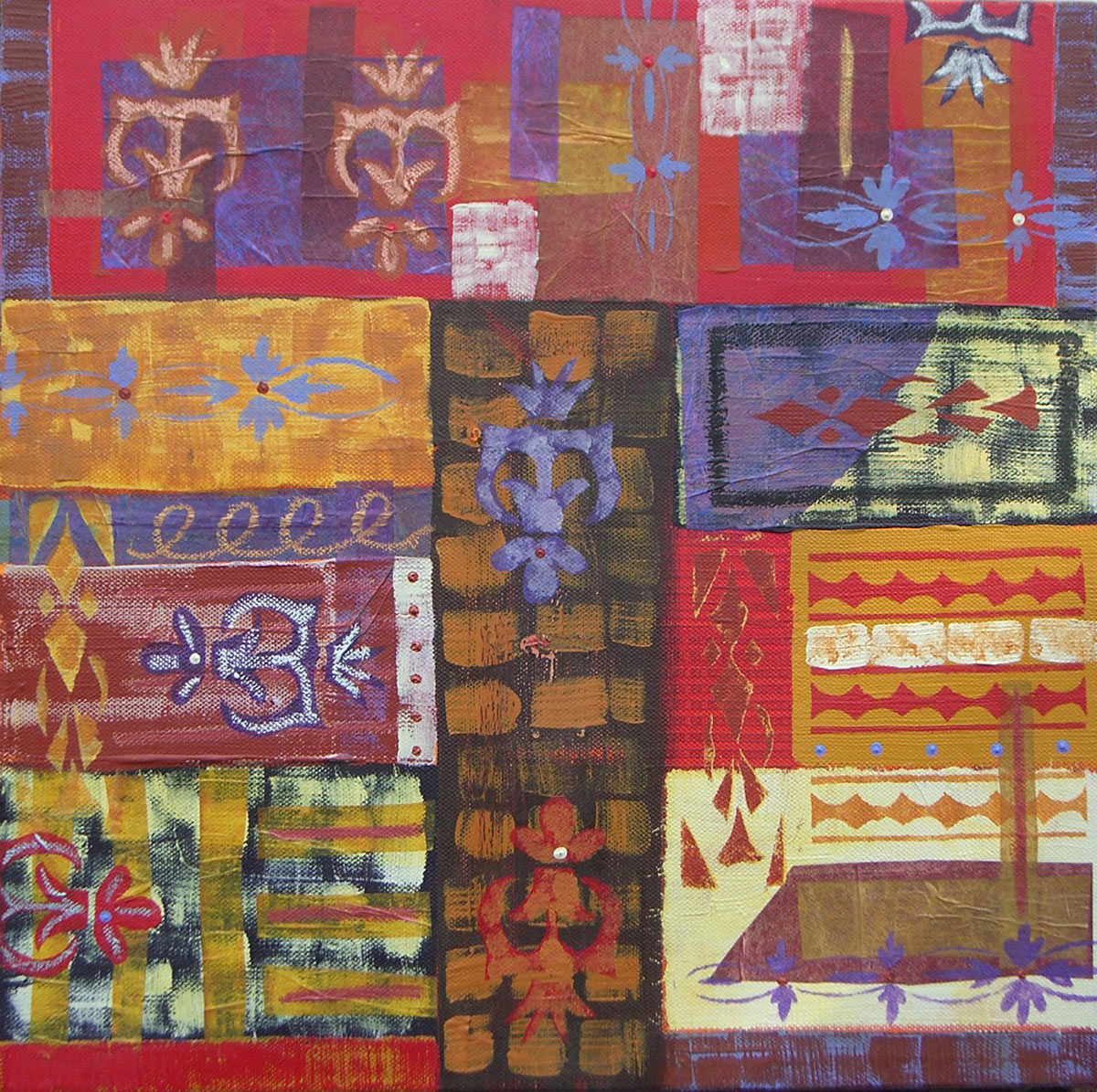 Mixed-media painting has allowed me to tap into my creative well unlike other forms of painting. I am always working towards a tactile and intricate appearance, so I use glazes, heavy body acrylics, and various gel mediums. I like to use common objects such as a wine cork, plastic wrap, or a brayer and experiment with bringing texture or even design into my paintings. Building up a painting with many layers and then scraping or scrubbing away until I get the desired effect or look I want has been very fulfilling. Inspiration comes from my daily life; whether it is beautiful architecture and all its elements, gorgeous colored flowers I see on a walk or historical design and pattern books–I absorb it all. As much as I prepare for my paintings, I am still led by my emotions when I paint and I always succumb to my inner feelings. I have also turned my art into my own greeting card line that I sell locally to friends and through the U.S. Embassy in Belgium where I am currently living. My greeting cards are a reflection of my love for color and are illustrative and whimsical in nature. Pushing my boundaries and experimenting as an artist, I really enjoy melding paint and graphic design together, which always leaves me wondering what I can create next. I take an idea and let it evolve trusting the creative process and my intuition while being open to the unpredictable. I have participated in group shows and art fairs in Belgium and my artwork is displayed in the United States and Europe.
Mixed-media painting has allowed me to tap into my creative well unlike other forms of painting. I am always working towards a tactile and intricate appearance, so I use glazes, heavy body acrylics, and various gel mediums. I like to use common objects such as a wine cork, plastic wrap, or a brayer and experiment with bringing texture or even design into my paintings. Building up a painting with many layers and then scraping or scrubbing away until I get the desired effect or look I want has been very fulfilling. Inspiration comes from my daily life; whether it is beautiful architecture and all its elements, gorgeous colored flowers I see on a walk or historical design and pattern books–I absorb it all. As much as I prepare for my paintings, I am still led by my emotions when I paint and I always succumb to my inner feelings. I have also turned my art into my own greeting card line that I sell locally to friends and through the U.S. Embassy in Belgium where I am currently living. My greeting cards are a reflection of my love for color and are illustrative and whimsical in nature. Pushing my boundaries and experimenting as an artist, I really enjoy melding paint and graphic design together, which always leaves me wondering what I can create next. I take an idea and let it evolve trusting the creative process and my intuition while being open to the unpredictable. I have participated in group shows and art fairs in Belgium and my artwork is displayed in the United States and Europe.

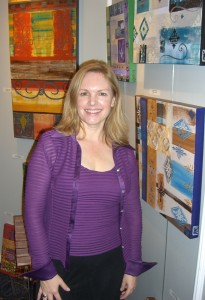
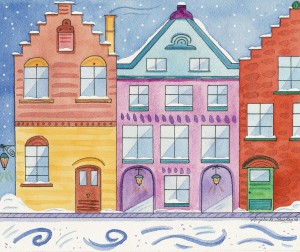
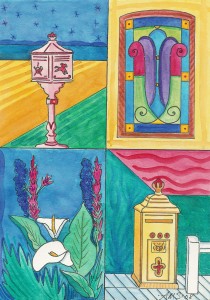
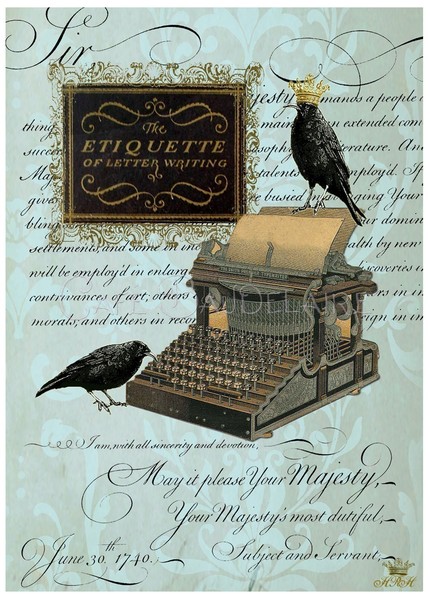

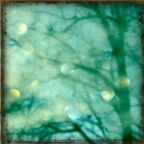

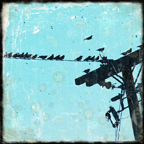
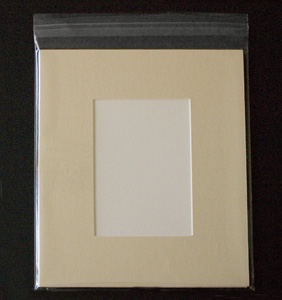

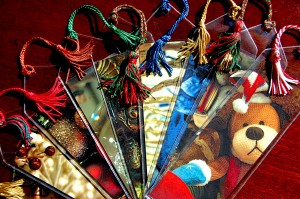
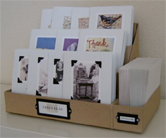
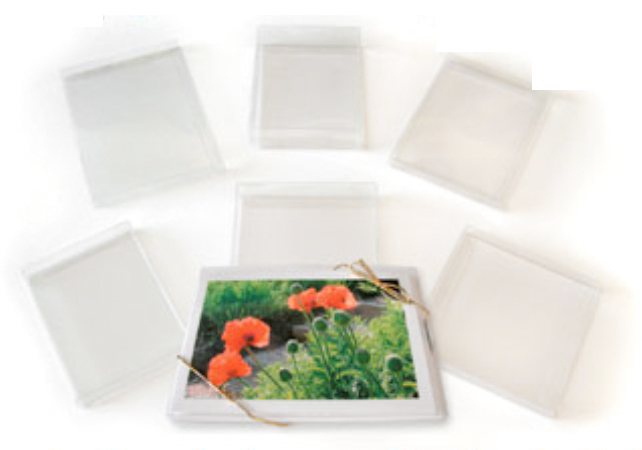
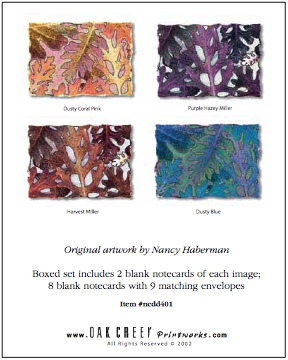
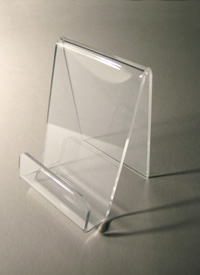
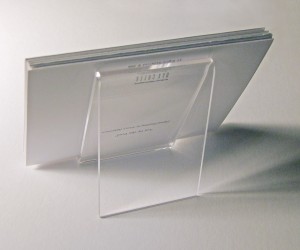
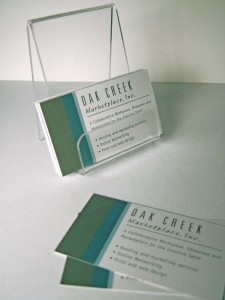
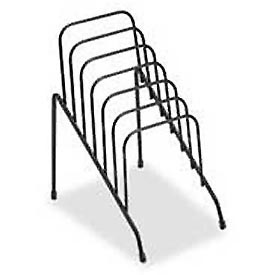
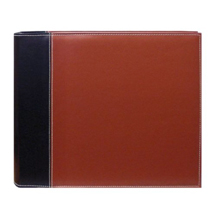
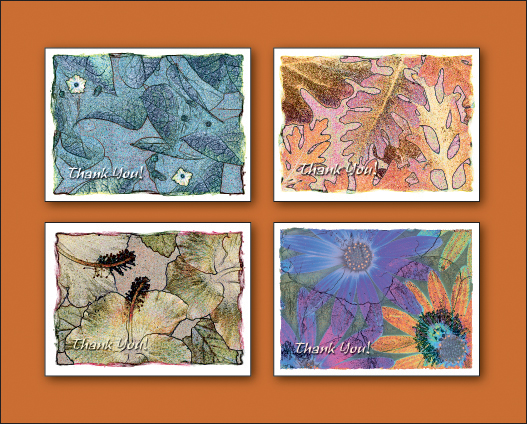
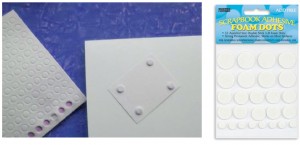
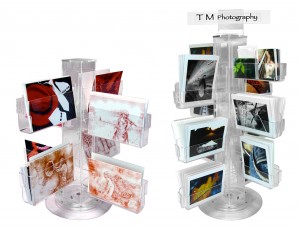
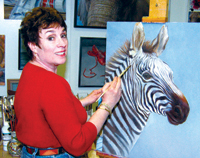
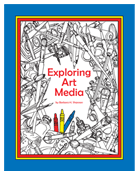
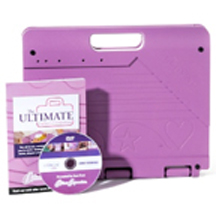
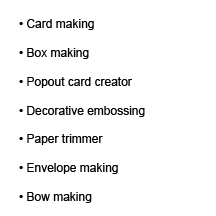
 Although collage is not my primary medium as an artist, it is one of my favorites to work in. I find the process of collage to be limitless in its rewards. When I have been painting or drawing for an extended period of time, collage can be a breath of fresh air. The manipulation of text, paper, and found imagery has the ability to generate ideas that would have otherwise remained undiscovered.
Although collage is not my primary medium as an artist, it is one of my favorites to work in. I find the process of collage to be limitless in its rewards. When I have been painting or drawing for an extended period of time, collage can be a breath of fresh air. The manipulation of text, paper, and found imagery has the ability to generate ideas that would have otherwise remained undiscovered.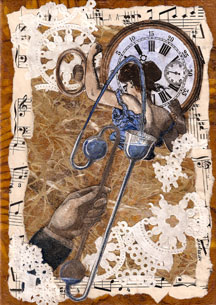 When working with a collage piece, I usually choose either a piece of panel (wood of canvas) or a shadow box (using an old dresser drawer is a popular technique for making shadow boxes). When working on panels, my collages are usually double sided with one side showing the text and the other showing images. All of the images that I use in my collages come from books of clip art and copyright-free vintage illustrations.
When working with a collage piece, I usually choose either a piece of panel (wood of canvas) or a shadow box (using an old dresser drawer is a popular technique for making shadow boxes). When working on panels, my collages are usually double sided with one side showing the text and the other showing images. All of the images that I use in my collages come from books of clip art and copyright-free vintage illustrations.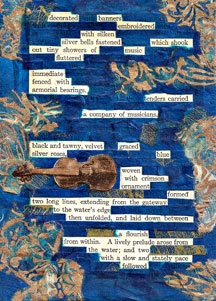 Making a collage is a lot like an act of brainstorming. When an artist feels that his or her creative well has run dry, collage can be a source of newly generated inspiration. To keep our creative juices flowing, it is important for us always to try new things. You never know what you might discover.
Making a collage is a lot like an act of brainstorming. When an artist feels that his or her creative well has run dry, collage can be a source of newly generated inspiration. To keep our creative juices flowing, it is important for us always to try new things. You never know what you might discover.